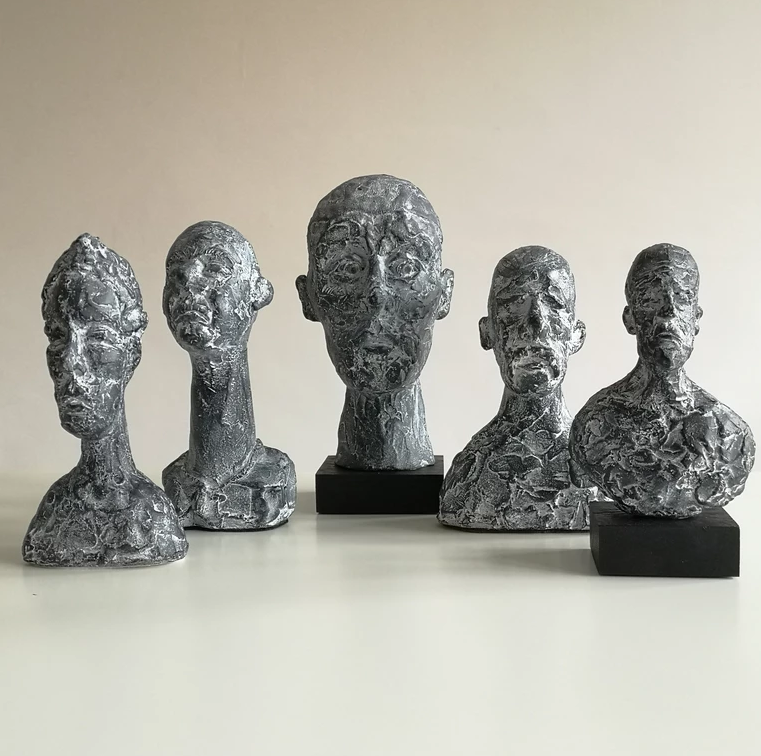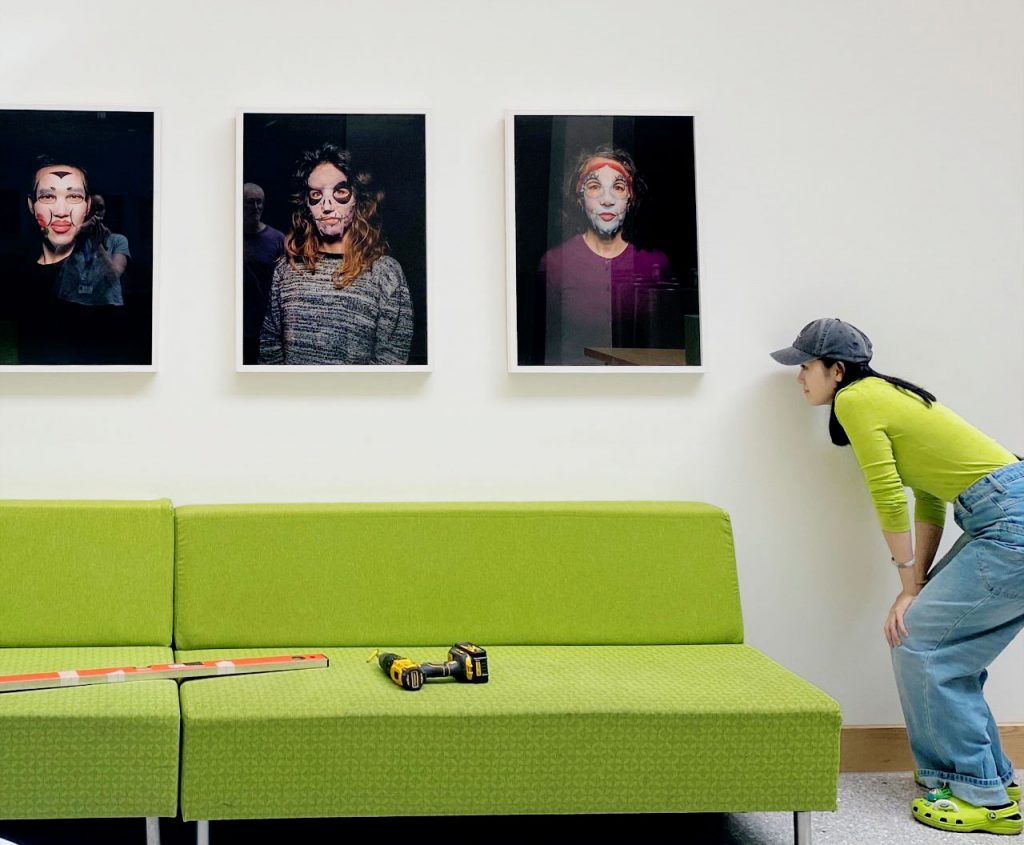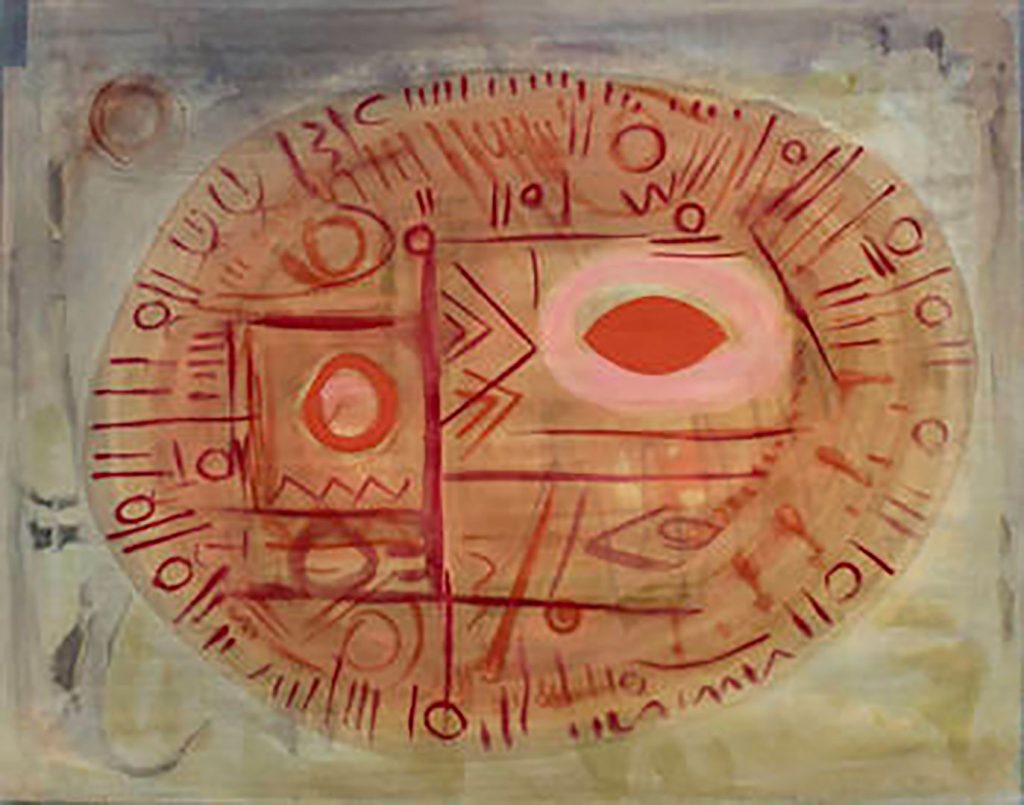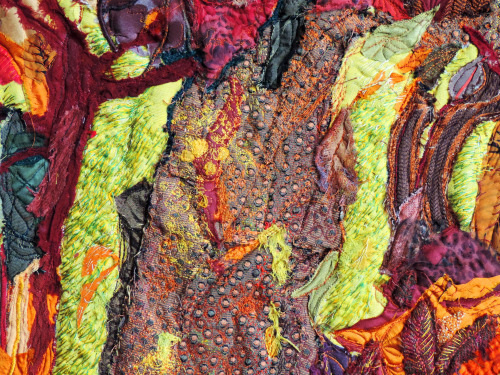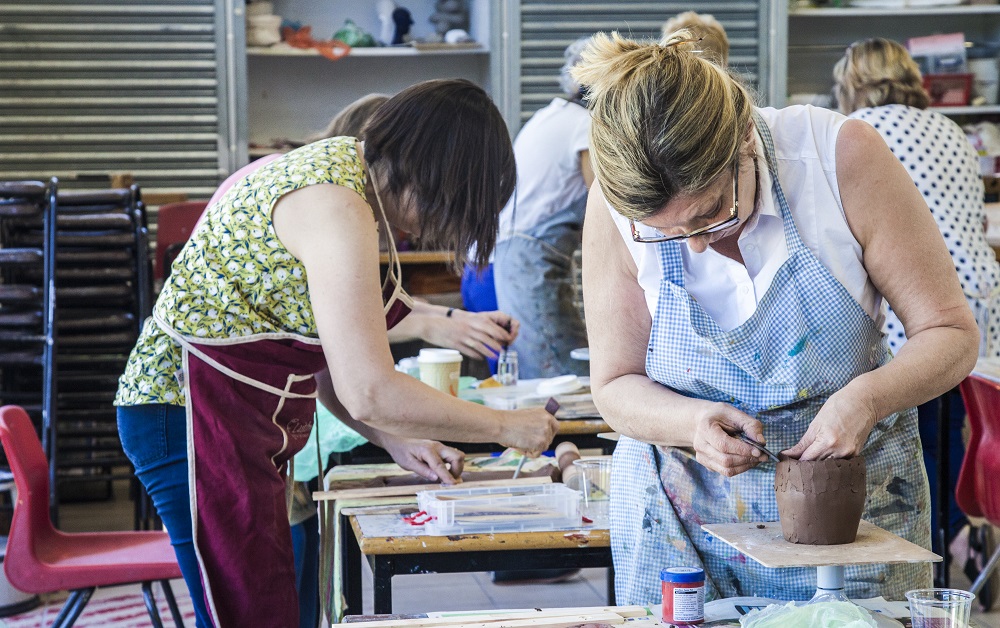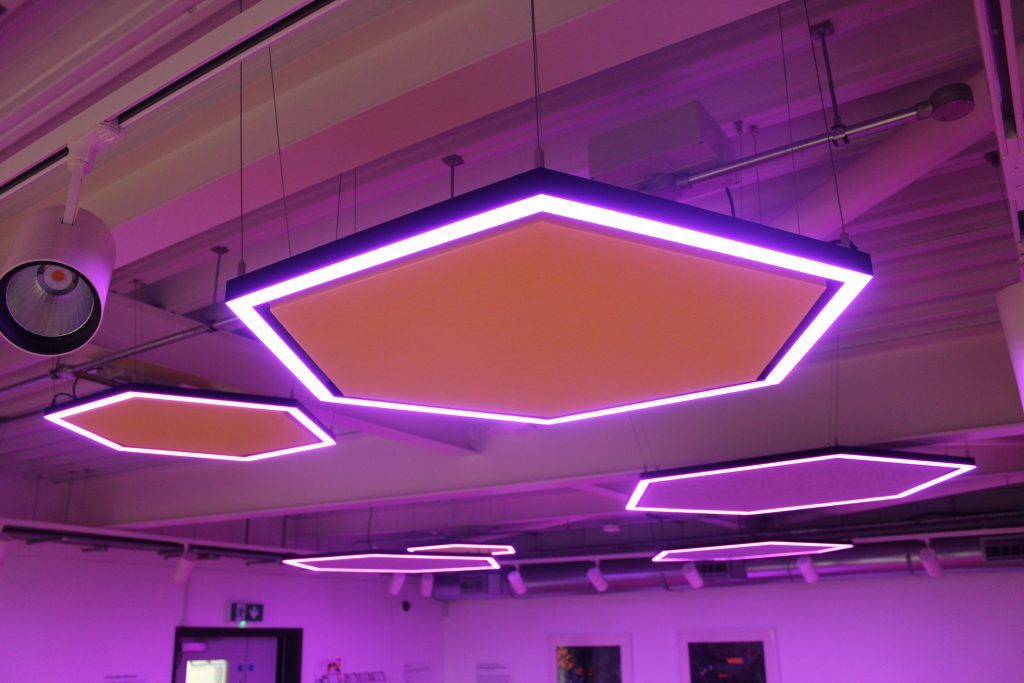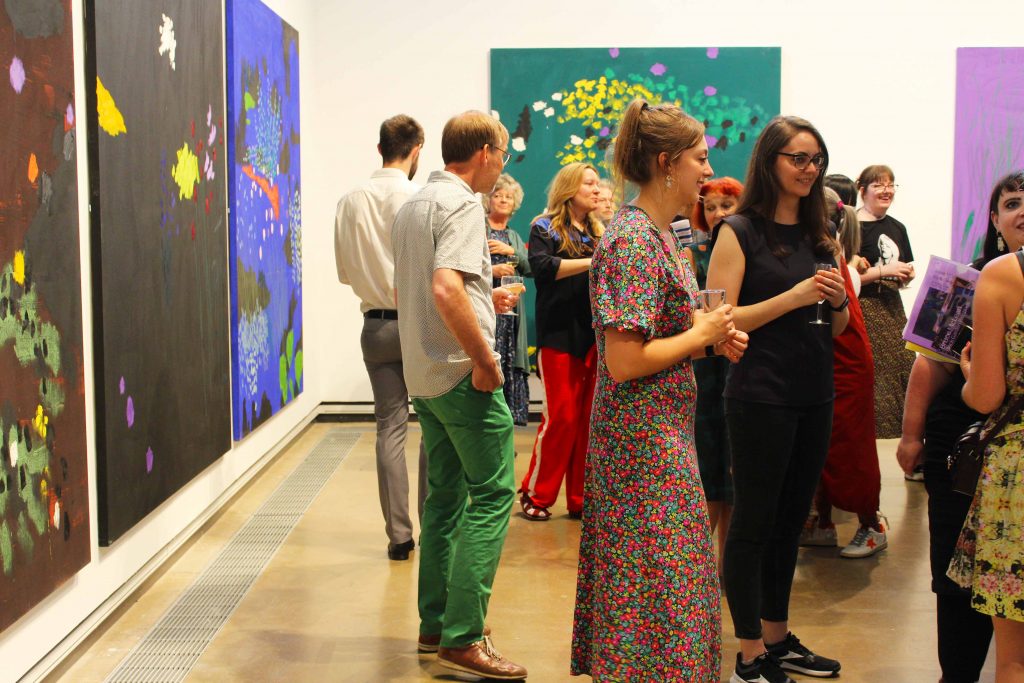Sculpting with clay is a unique and often therapeutic way of making, allowing you to explore the endless possibilities of sculpture, ceramics and much more. At Attenborough Arts Centre our Sculptural Ceramics course gives you the chance to explore the medium with ceramics expert Austin Orwin. We took the time to talk to Orwin to find out more about his passion for clay as well as his epic Home Portraits series.
What is your favourite medium to work with and why?
Often I’ll choose a medium that will be best suited to the design of a piece of work, but I do have a soft spot for stone carving. I greatly enjoy the process of releasing a form from a block of material and find the process of carving, the chipping away, can be quite meditative at times.
In a nutshell, how would you describe your creative practice?
Aside from my teaching I spend about half my working week in my sculpture studio where I have several projects on the go at any given time. I’ll often be working on a series of character heads, or perhaps carving an abstracted landscape from stone. The other half of the week I’ll be working on ink illustrations or you’ll find me out and about with my sketchbook working on ideas or simply capturing urban scenes from around the city.
Your course here at the Attenborough Arts Centre centralises on working with clay using a variety of different techniques. What draws you to working with clay?
I run the Sculptural Ceramics course and find clay a wonderful material to work with, allowing the development of ideas easily as it’s so pliable, responsive and adaptable. I also run the Experiments in Sculpture courses where a variety of materials and techniques are used, from the modelling of clay to the carving of stone. Each material requires a different set of skills to work and has its own benefits and uses. Quite often, students will progress their knowledge of sculpture by taking on bigger and more complex projects in class. In my own practice I’m well versed in a range of materials and techniques, and so can help guide students to a successful outcome with their own projects.
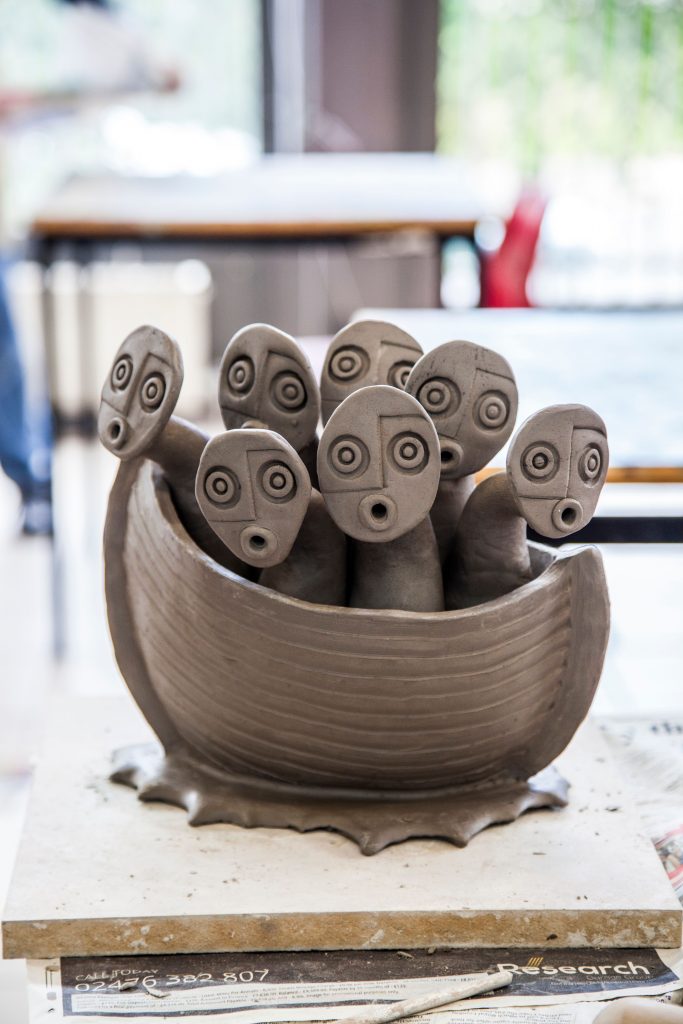
Caption: Just one of the clay pieces created by students within Orwin’s Experiments in Sculpture course.
What do you enjoy about teaching at the Attenborough Arts Centre?
I love the passion that students bring to class. We all have busy lives and to have a creative space to explore ideas, to have the opportunity to be hands-on, and to make something we never knew we could is invaluable to many.
Drawing appears to play an important role in your work, do you find that your drawn works inform three dimensional works or vice-versa?
Absolutely! An important factor in my artistic practice is one of looking, really looking, and analysing what it is I see. It may be the way physical forms intersect or the way the growth of a leaf follows mathematical principles. There’s a lot to absorb when you really start looking.
I use my sketchbook to explore sculptural ideas and to depict scenes around me which helps build my own unique visual language.
When you’re not sculpting or drawing, what do you like to do?
I’m a keen long distance runner and love heading out on the trails for an adventure.
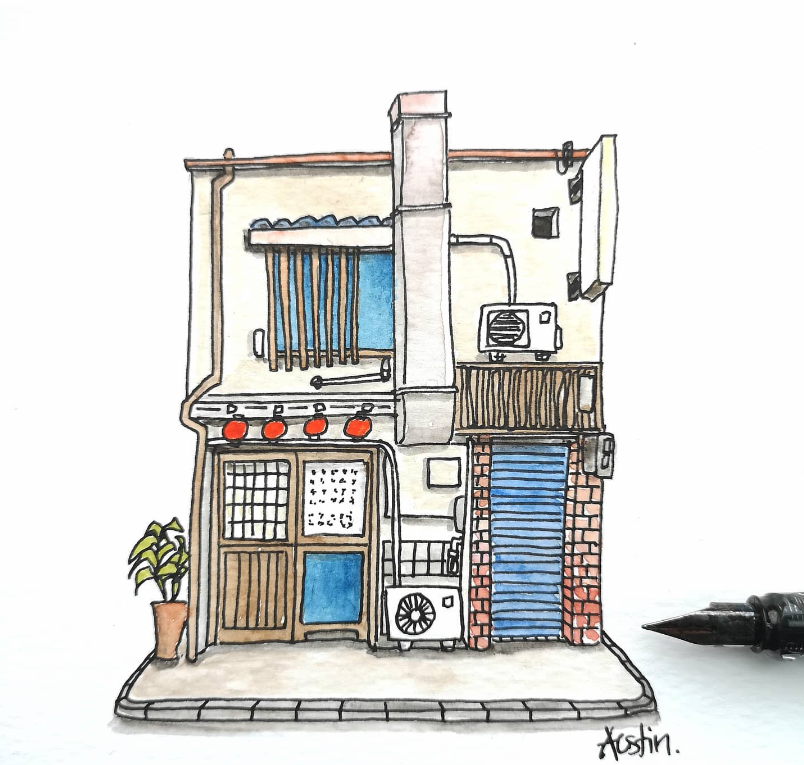
Caption: An example of Orwin’s carefully rendered ‘house portraits’, sitting against a white background.
We noticed on your Instagram that you create beautifully rendered ‘home portraits’ as you describe them. Could you tell us a bit about your use of white space and line when creating these pieces?
I’m fascinated by both the use of negative space and the use of an expressive line in my drawn work. Each can be used in differing ways to accentuate an image, or to draw the viewers eye into an area of a piece. The thickness and density of an ink line gives a surprising character to my work I find. Actually, drawing and sculpting have many similarities. There’s the physicality of the work or the object your drawing, and then there’s how that object interacts with the space around it.
What are you most proud of in your creative career?
I’ve been teaching sculpture at Attenborough Arts Centre for 17 years and it’s wonderful to see students progress in their practice and take on even more challenging projects. It gives me the opportunity to help grow their knowledge and to stretch their idea of what they initially thought was possible. I think we all have the capacity to be more creative than we may perceive ourselves to be, and I believe it’s important to constantly grow. I suppose I’m most proud of how I keep growing, how I keep pushing forward, how I keep exploring creatively, and how I hopefully facilitate and inspire others to do the same.
Lastly, Where can we find your work?
I do occasionally post images of my work on Instagram @theleicestersketcher
Find out more about the Sculptural Ceramics & Experiments in Sculpture courses as well as our other fantastic creative courses by visiting our What’s On page. You can also learn more about the creative tutors who lead our workshops on our Meet Our Tutors page.

